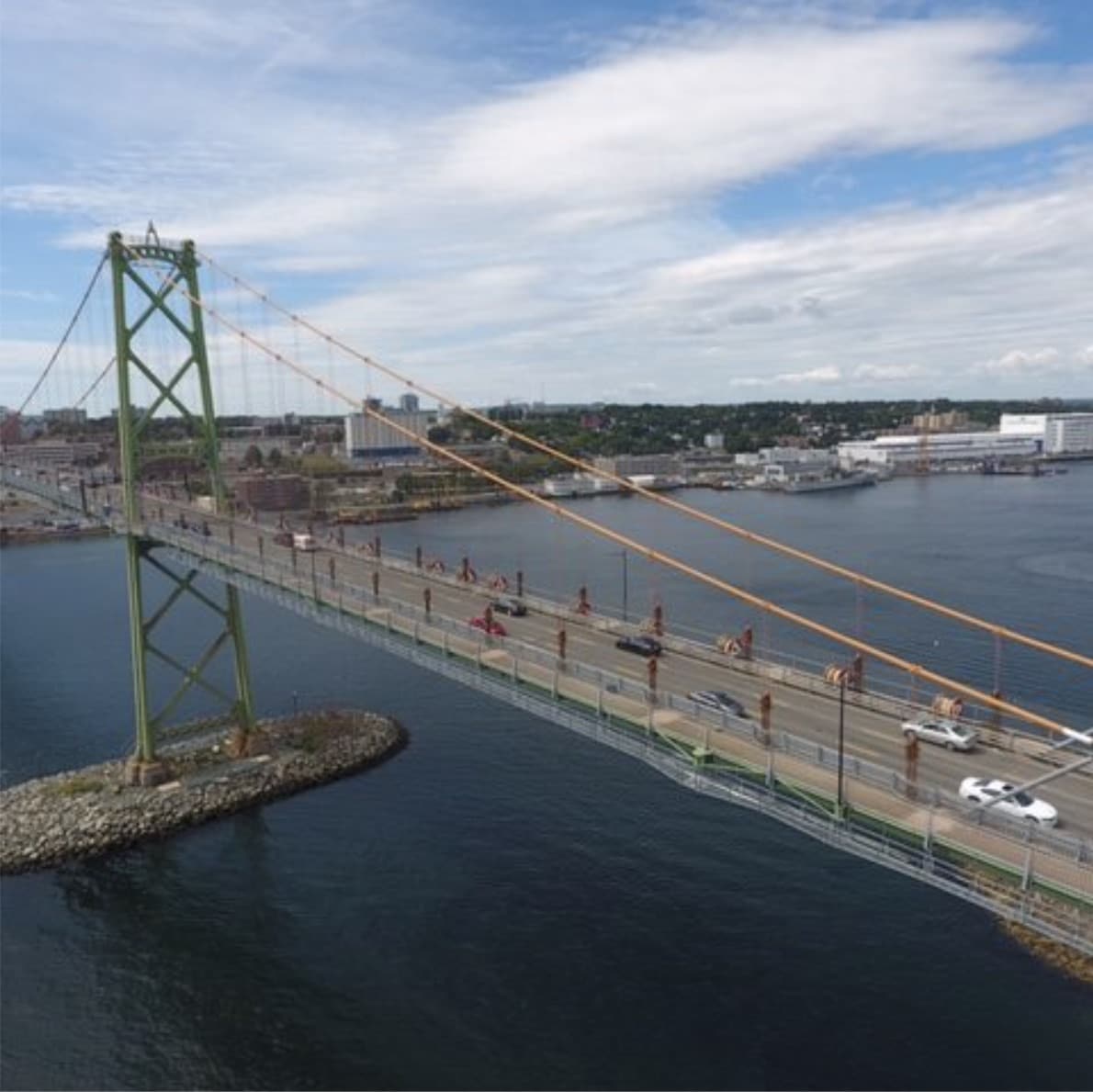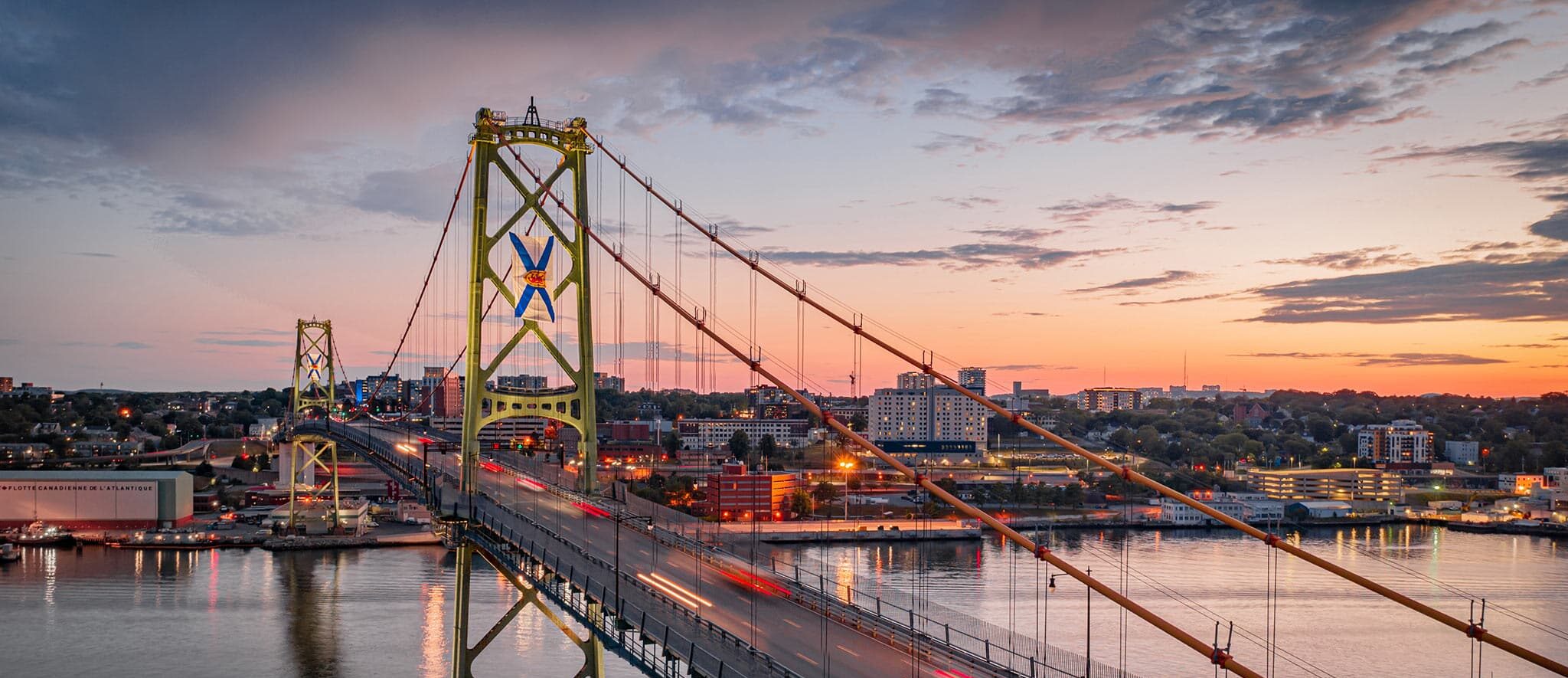Bridge traffic as a measure of economic activity
March 28, 2022

When local researchers study the impact of the pandemic, a look at traffic volumes on the Halifax Harbour Bridges could offer interesting metrics.
“If traffic is a barometer of what is happening in the economy, as we’ve just passed the two-year mark for the pandemic, our bridge counts can be instructive in judging the impact of travel bans, the closures of non-essential services, quarantines, and work from home initiatives,” said Steve Snider, CEO and General Manager of Halifax Harbour Bridges.
As an organization that sees almost 100 per cent of its revenue derived from tolls and fees based on traffic volumes, HHB has kept a close eye on traffic and how it has been impacted by COVID prevention measures – and now record-high gas prices.
Following the World Health Organization declaration of a global pandemic on March 11, 2020, Snider said traffic on the Halifax Harbour bridges soon plummeted 55 per cent from 2019 volumes.
HHB’s fiscal year runs from April to March. In fiscal 2021, when all months were impacted by the pandemic, traffic volumes decreased by 22.1% over 2019 levels, representing 7.4 million fewer crossings. That loss of traffic translated into a 20 per cent decrease in toll revenues.
As lockdowns loosened and Nova Scotia reopened to visitors through late 2021, the number of crossings returned to 95 per cent of pre-pandemic levels. Then, the Omicron variant emerged and a new round of provincial health measures was introduced in December.

“We went from 10-15 days with 100,000 crossings a day in October, November, and early December to zero days in January,” said Snider. “In total, we were back to just 76 per cent of pre-COVID traffic. In January we had less than 80,000 daily crossings for the first half of the month, and that’s not a lot.”
As the current fiscal year comes to a close in March, he said it appears the bridge volume for 2021-22 will be higher than last year, but still down nine per cent over the pre-COVID levels.
The numbers fall in line with the transportation monitoring carried out by the Halifax Regional Municipality. Late in 2021 bus traffic had recovered to 66 per cent of pre-COVID, but dropped 22 per cent with the emergence of Omicron and related health measures. To the end of 2021, cycling was still 33 per cent lower than December 2019 levels.

Back on the bridge in February, the traffic numbers grew slightly to 81 per cent of pre-COVID levels with total crossings topping just over two million. There was one day with over 100,000 crossings.
COVID may have also contributed to a spike in trucks colliding with the canopies of HHB toll booths. In 2020 there just four accidents at the toll plazas where trucks or buses ended up in the wrong lanes, damaging the vehicle and the toll structure. In 2021, as the roads started to get busy again, that number reached close to 20 and spawned an unsanctioned calendar that featured the smashed vehicles in the toll lanes.
In response, HHB added warning crash bars and to mid-March there has not been another canopy collision.
With the province lifting the COVID-19 State of Emergency, Snider suspects there will be a new bump in crossings, but it could still be two or three years before the traffic numbers fully recover, especially if gas prices remain high.
“I remember after Hurricane Katrina there was a spike in gas prices and bridge traffic fell rather dramatically for a few months. I have no idea if history will repeat itself in that vein, but it’s a possibility if prices remain high for a sustained period of time.”
Although facing another year-end with revenue challenges, Snider says HHB will continue to do whatever it can to continue to keep the bridges congestion-free.
“Halifax is positioned for growth and the bridges are at the heart of the transportation infrastructure. We will support that growth through safe and efficient transportation of cars, commercial vehicles, and active transportation options.”


